The Making of a Page from the King of Bangkok
From the Series: Graphic Ethnography on the Rise
From the Series: Graphic Ethnography on the Rise

Trying to reconstruct in words the process behind four years of the collaborative ethnographic, archival, graphic, and editorial work for The King of Bangkok would be an ungrateful task, bound to fail. Therefore, rather than attempting it, we want here to take a page out of our graphic novel and break it down to its components, with the hope that this will give a sense of how a dialogue between ethnography and comics is generated and embedded into a visual product, how interviews, participant observation, and archival work enter the picture, and how comics provided a tool for condensing and restituting them. In order to do this, we start from the final page and move backward. Here it is.
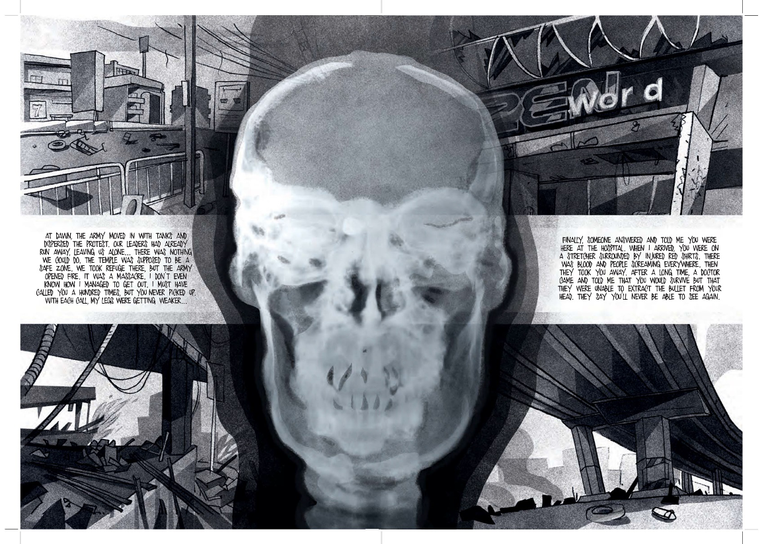
In this page we are almost at the conclusion of the graphic novel and our protagonist, Nok, is waking up in a hospital, while across town the political protest he had been part of has been dispersed violently by military forces. Talking to him is Gai, his wife and fellow protester, who is filling Nok in on what had happened and telling him that he was shot and he will not, unfortunately, get his sight back. In the graphic novel Nok and Gai are not imaginary characters but composite ones, the meshing of multiple people Claudio interviewed and spent time with during his decade-long research in Thailand. This was for him a very significant page and some version of it was in his head since the beginning of the project and maybe even provided some motivation to initiate the whole work. During an interview with one the person behind Nok, a motorcycle taxi who was shot during the 2010 red shirts protests in Bangkok, the injured protester had taken out of a folder this x-ray and gave it to Claudio, asking him to tell his story.
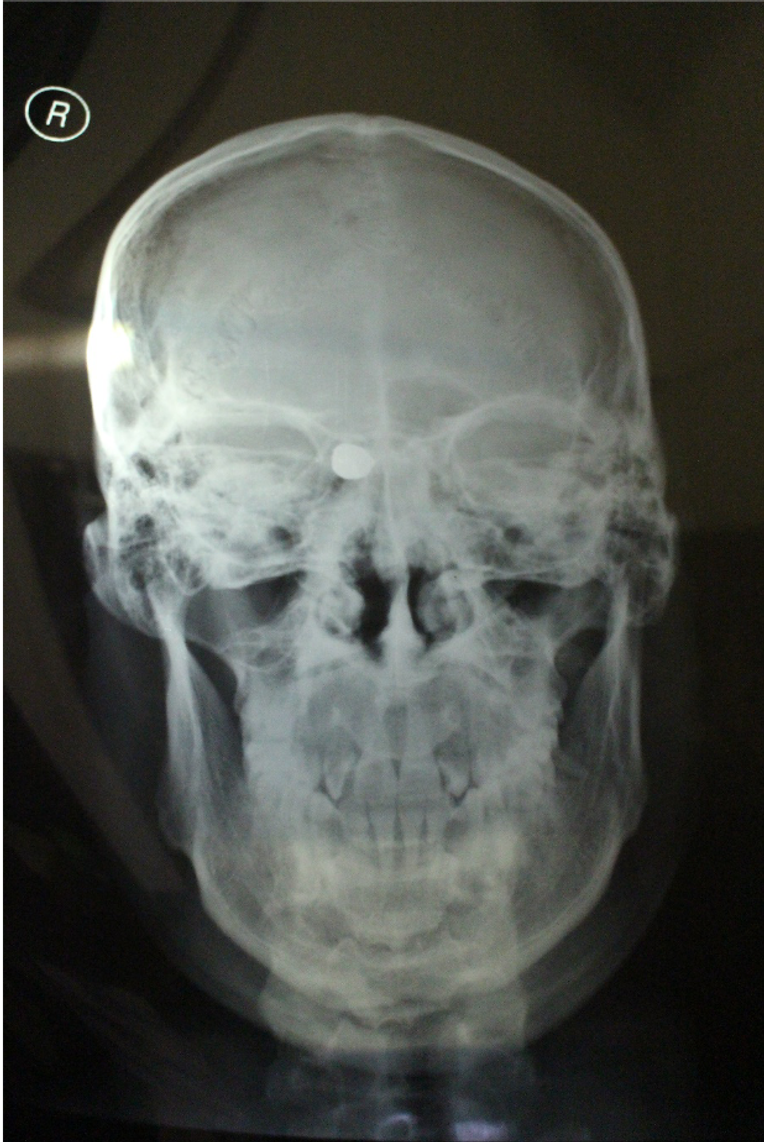
Claudio knew these images needed to be there but had no idea how to build a page around it. Discussing among us, Claudio shared with us why this image was so important. Sara come up with a proposal for the page: the x-ray would be at the center of a splash page, surrounded by images of the aftermath of the military dispersal, and a narrating voice telling the readers about what had happened to Nok and the protesters around him.
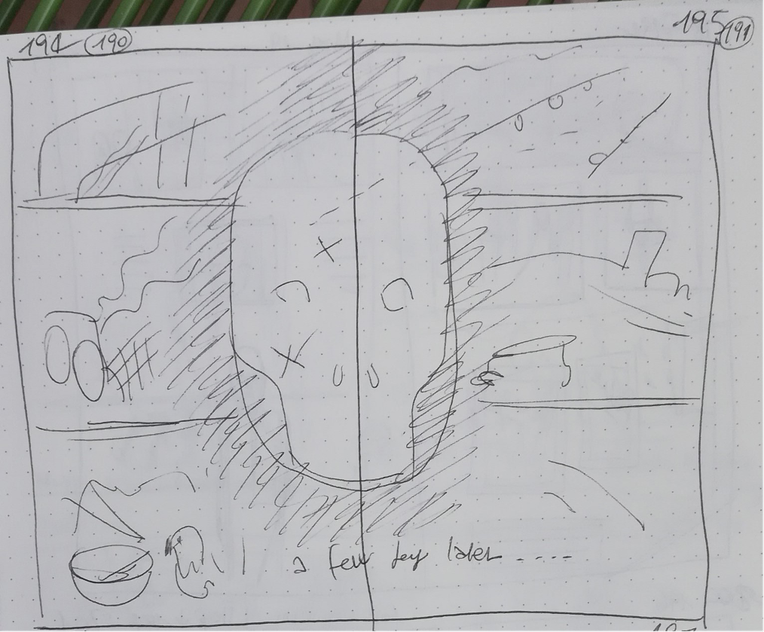
We all liked the idea but the question was: what should these images be and what text should it go with it?
The first impulse, as seen in the initial sketch, was to use Nok’s voice as a narrative device, take the text from an interview Claudio had done with the person behind this part of his story, and have his words lead us through the events. But, as we discussed this approach, Chiara pointed out that in one of the interviews the person told us that for the first days in hospital he could barely talk. It felt to him like the world had simply turned off—like a tv, he said—swallowed in darkness: his wife’s voice became the only anchor he had, something that guided him and kept me from disappearing completely. As we listened again to this interview we decided that Gai should be the narrative voice here, filling Nok’s darkness and memory.

Once this was settled the question was how to select what images made sense to narrate visually the aftermath of months of protest in 2010. Claudio had shared with Sara and Chiara his personal photographic archives from the period: thousands and thousands of pictures. Sara immediately noticed that the most striking feature of the pictures from the dispersal day (May 19) was the sudden absence of people from the streets after weeks of mass gathering and crowds. We decided to choose empty spaces, showing the destruction and debris left behind by the dispersal. As we always did when drawing a page, we went back to a visual archive we had created during our collective research trip to Thailand: a collection of more than 5,000 images divided by year that allowed us to balance lyrical drawings with the accuracy of ethnographic realism. Each of us selected the images that we found most significant and Claudio added some of the pictures he himself had taken after the Red Shirt dispersal. Together we decided for four images that would become inspirations for the page at hand, images of what a massive political mobilization left behind, then Sara transformed them into drawings.

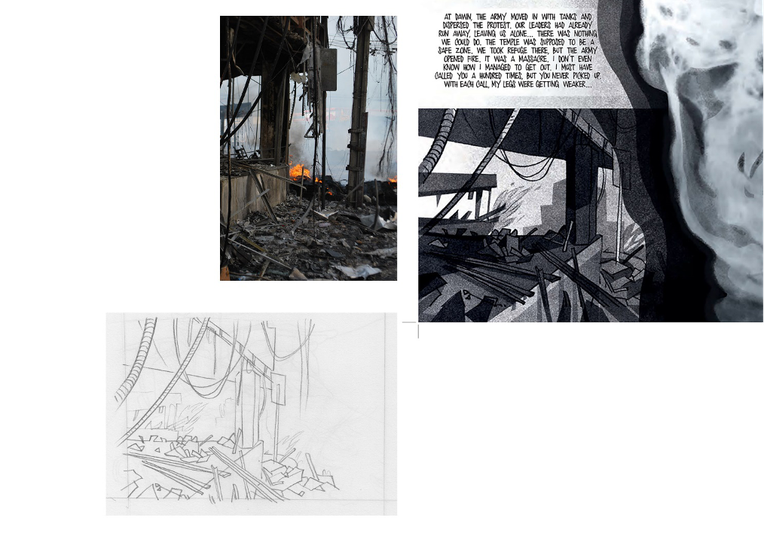

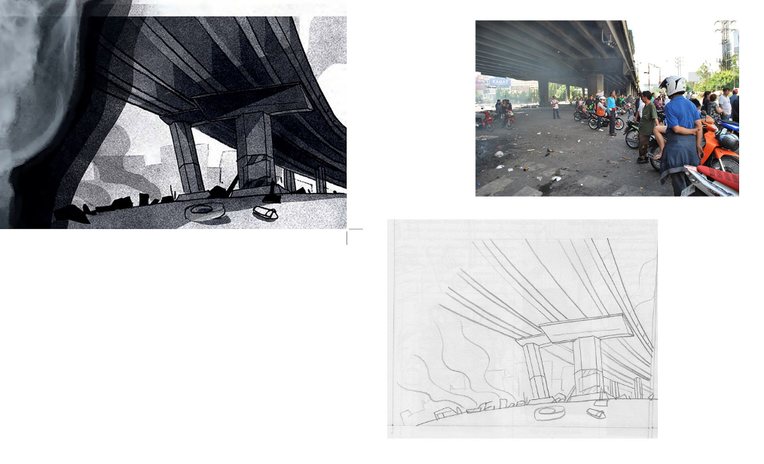
We finally had all the components and, after inking the page, digitalizing the images, editing and re-editing (and re-editing) the text, readjusting the spacing to balance images and text, the splash page was ready: a graphic condensation of interviews, archival images, emotional landscapes, and narrative devices. In other words, a piece of ethnography.
